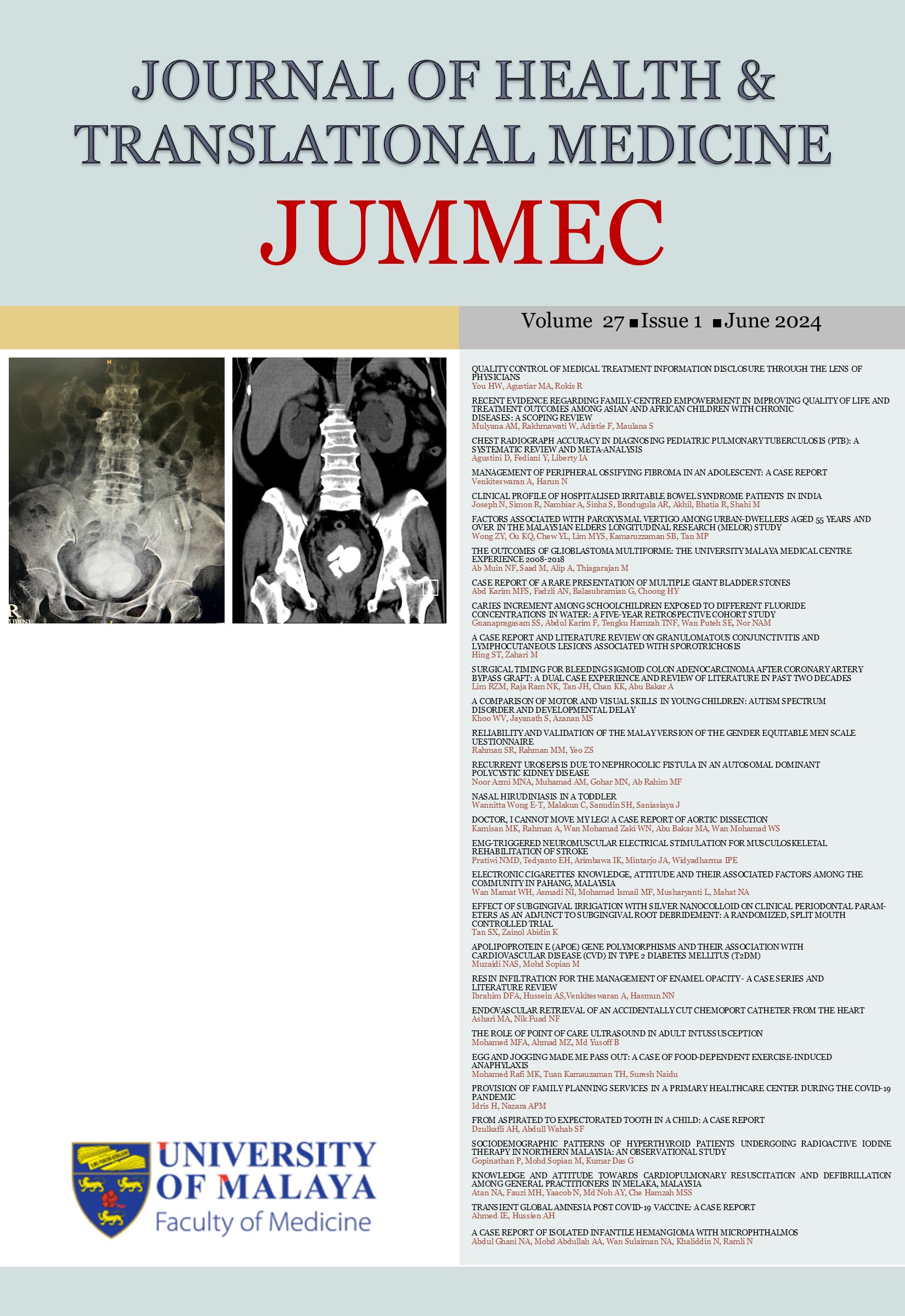RESIN INFILTRATION FOR THE MANAGEMENT OF ENAMEL OPACITY - A CASE SERIES AND LITERATURE REVIEW
Received 2023-04-28; Accepted 2023-08-02; Published 2024-01-17
DOI:
https://doi.org/10.22452/jummec.vol27no1.21Keywords:
Enamel opacity, Esthetic, Microabrasion, Minimal invasive dentistry, Resin infiltrationAbstract
Resin infiltration (RI) technique was introduced as one of the minimally invasive dentistry techniques for the management of enamel opacity. Six young patients with post-orthodontic white spot lesions, molar incisor hypomineralization, fluorosis, and amelogenesis imperfecta were treated with resin infiltration (RI). RI was used alone or in conjunction with bleaching or microabrasion. The esthetic improvement of lesions is immediately noticeable following treatment, even though some enamel discoloration remained visible. No color changes of the treated teeth noted after 6-month review. The use of RI alone or in combination with the other interventions has been shown to be successfully masking enamel opacities in young patients. Therefore, RI technique can be an option in managing enamel opacity of anterior teeth due to demineralization or developmental defects of enamel.
Downloads
Downloads
Published
Issue
Section
License
All authors agree that the article, if editorially accepted for publication, shall be licensed under the Creative Commons Attribution License 4.0 to allow others to freely access, copy and use research provided the author is correctly attributed, unless otherwise stated. All articles are available online without charge or other barriers to access. However, anyone wishing to reproduce large quantities of an article (250+) should inform the publisher. Any opinion expressed in the articles are those of the authors and do not reflect that of the University of Malaya, 50603 Kuala Lumpur, Malaysia.


